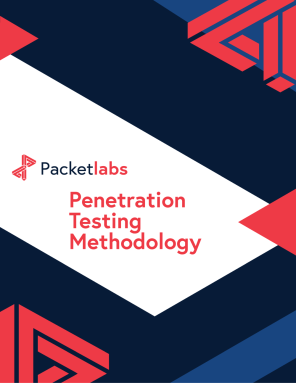The Role of Loader Malware
Would you like to learn more?
Download our Pentest Sourcing Guide to learn everything you need to know to successfully plan, scope, and execute your penetration testing projects.
Loader malware is designed to establish a foothold on a system and then retrieve or install second-stage payloads. The special benefit of Loader malware is that it can import various specialized hacker tools at the will of the attacker making it the Swiss Army Knife of malware. This may include Remote Access Trojans (RAT), InfoStealers, Ransomware payloads, CrypoMiners, or other specialized tools. Loader malware serves as a bridge between unauthorized initial access and the command and control (C2) stage of a cyber attack.
Once the Loader malware has been installed on the victim's system, attackers can interact with it remotely, instructing it to import individual modules to conduct further scans, collect information from the environment, steal specific types of data, move laterally to other systems on the network, encrypt the victim's data to ransom it, conduct crypto mining, and more.
Let's learn more about how Loader malware supports the complete cyberattack lifecycle, how attackers get it installed on the victim's system in the first place, and some ways that Loader malware can evade detection from endpoint security products such as anti-virus products and Endpoint Detection and Response (EDR) solutions.
Loader Malware in the Cyberattack Lifecycle
Loader plays a critical role early in the attack chain. They are typically part of an initial access hack or used immediately after initial access is gained. For example, one of the first things that a trojan document or drive-by-download will do after being executed by a victim is to download Loader malware and connect back to the attacker's server. The Loader then acts to further compromise compromised networks.
Most cyberattacks follow roughly the same process. The most simplistic description of an attack process looks like this:
Conduct reconnaissance and plan the attack
Gain initial unauthorized access
Achieve objectives such as steal data, encrypt files for ransom, or cause Denial of Service (DoS) to disrupt operations
However, when attackers first gain initial access, they aren't always immediately aware of what the most effective next steps are to cause the maximum damage. According to The Cyber Kill Chain, the middle stages of a cyber attack are:
Delivering malware to the victim's machine
Exploiting a vulnerability
Installing the malware
Gaining remote control of the victim's computer
These middle stages of a cyber attack are complex and may involve many processes. Therefore, somewhere in between gaining unauthorized access and achieving objectives lies some important and technically sophisticated steps. Optimizing the stealth, efficiency, and effectiveness of these middle stages is exactly what Loader malware helps with.
Delivery Methods for Loader Malware
Delivery methods for malware are diverse, but the most common are social engineering-based attacks that trick the victim into executing malicious code. Loader malware is often hidden within seemingly legitimate files or delivered via manipulated online services, making it deceptively effective at bypassing user judgment and traditional defenses.
Phishing Emails: Attackers send emails with malicious attachments or links, usually disguised as legitimate messages from trusted sources. When the victim opens an attached file with malware, or visits a website that exploits the victim's browser, a dropper installs the Loader malware.
Direct Code Execution: Attackers are also known to trick victims into directly executing code such as PowerShell scripts. This method enables silent installation of Loaders that operate in the background giving attackers backdoor access to the victim's computer. Attackers may alternatively exploit software vulnerabilities (CVEs) directly that allow remote code execution (RCE).
Drive by Downloads/Poisoned Packages: Downloading malicious trojan apps or tampered software packages can install Loader malware. Trojans are distributed via watering hole attacks on software sharing websites, Torrent links, or even through legitimate packages repositories such as npm or PyPi, among others.
SEO poisoning and Malvertising: Attackers manipulate search engine rankings and malicious ads on legitimate websites to redirect users to download malware or even trigger automatic downloads.
Support Scams and Other Deception: Cybercriminals impersonate technical support or IT security professionals to convince users to install remote access tools or fake security software. These tools often serve as Loaders for additional malware.
Stealth Techniques Used by Loader Malware
Loader malware often includes sophisticated evasion capabilities to avoid detection and maintain persistence within the target environment. These techniques help it bypass antivirus software, evade network defenses, and reduce the chances of early discovery during incident response or threat hunting.
Fileless Execution: Instead of writing files to disk, some Loaders operate entirely in memory, making them harder for traditional antivirus tools to detect or quarantine. This technique often leverages legitimate system tools like PowerShell or WMI.
Anti-virus Detection: Loaders may use packing, encryption, or obfuscation to disguise their code from signature-based antivirus engines. Some adaptively test for known endpoint protection tools and alter their behavior accordingly.
Scripting (e.g., Python): Many Loaders are delivered as scripts such as Python or JavaScript, to remain lightweight and flexible, which can often also bypass detection rules.
Digital Signatures: Some malware authors sign Loader binaries with stolen or fraudulent certificates to make them appear trustworthy. Digitally signed malware may bypass application whitelisting or raise fewer alerts.
Using Trusted Protocols for Firewall Evasion: Loaders often communicate using commonly allowed protocols like HTTPS, DNS, or even common cloud services (e.g., Dropbox, Google Drive). This helps them blend in with normal network traffic and avoid detection by firewalls perimeter defenses.
Worst Strains of Loader Malware in 2025
Several prominent Loader malware strains continue to dominate the threat landscape in 2025, evolving with new tactics and features.
SmokeLoader: A long-standing Loader known for its modular design, SmokeLoader is used to deploy info stealers, ransomware, and other payloads while employing anti-analysis techniques. Qilin ransomware actors frequently use SmokeLoader for sandbox evasion and NETXLoader (.NET-based) for encrypted, in-memory payload delivery.
QakBot: Once primarily a banking trojan, QakBot has evolved into a powerful Loader platform with worm-like propagation and has been a major component in post-intrusion ransomware attacks. An aggressive QakBot campaign linked to Black Basta targeted U.S. companies, achieving domain admin rights quickly and deployed ransomware within ~12 hours.
GootLoader: Known for leveraging SEO poisoning and compromised WordPress sites, GootLoader delivers payloads like Cobalt Strike and is notorious for its complex, multi-stage infection chains. This strain continues to evolve with new versions (e.g., GootLoader 3) distributed via SEO-poisoned sites, delivering payloads like Cobalt Strike and IcedID.
Conclusion
Loader malware plays a pivotal role in modern cyberattacks by bridging initial access and full compromise. Its modular design, stealth techniques, and widespread use in malware campaigns make it a critical threat vector. Understanding how Loaders operate is essential for detecting early-stage intrusions and preventing more damaging second-stage payloads like ransomware or data theft.
Contact Us
Speak with an Account Executive
Interested in Pentesting?

Penetration Testing Methodology
Our Penetration Security Testing methodology is derived from the SANS Pentest Methodology, the MITRE ATT&CK framework, and the NIST SP800-115 to uncover security gaps.
Download Methodology
Pentest Sourcing Guide
Download our Pentest Sourcing Guide to learn everything you need to know to successfully plan, scope, and execute your penetration testing projects.
Download GuideExplore in-depth resources from our ethical hackers to assist you and your team’s cyber-related decisions.

September 13 - Blog
Why Multi-Factor Authentication is Not Enough
Knowing is half the battle, and the use and abuse of common frameworks shed insight into what defenders need to do to build defense in depth.

November 19 - Blog
The Top Cybersecurity Statistics for 2024
The top cybersecurity statistics for 2024 can help inform your organization's security strategies for 2025 and beyond. Learn more today.

October 24 - Blog
Packetlabs at SecTor 2024
Packetlabs is thrilled to have been a part of SecTor 2024. Learn more about our top takeaway's from this year's Black Hat event.







